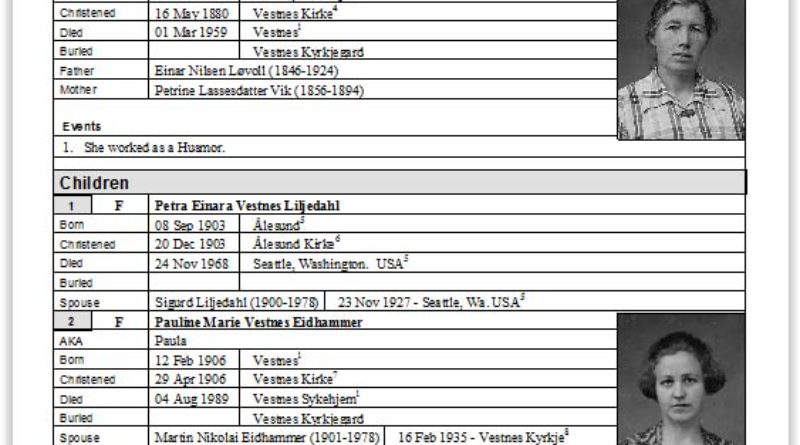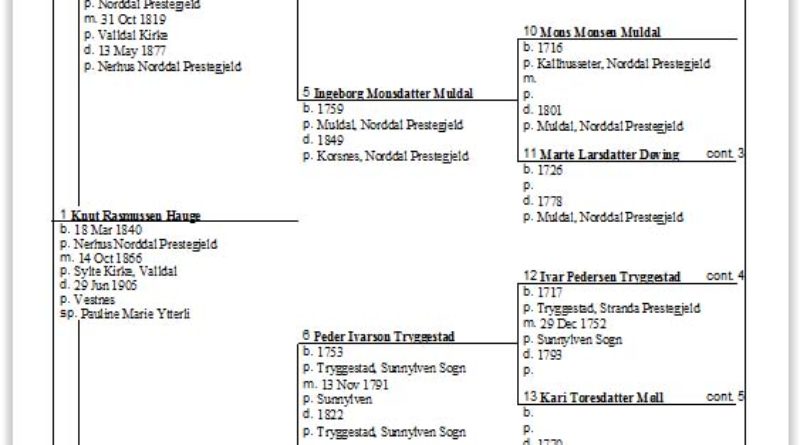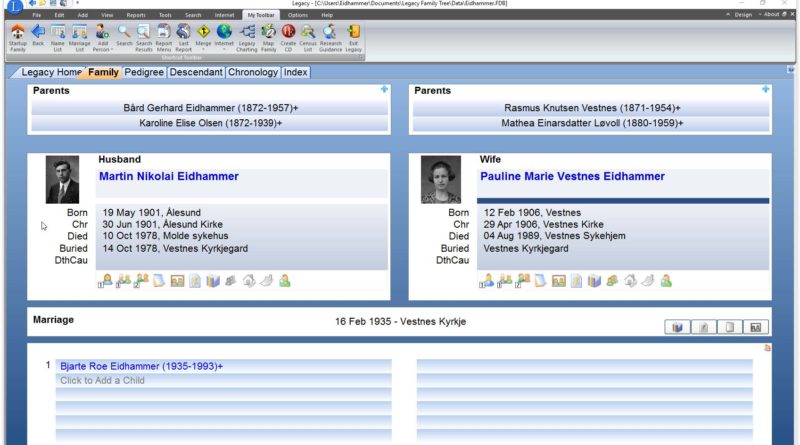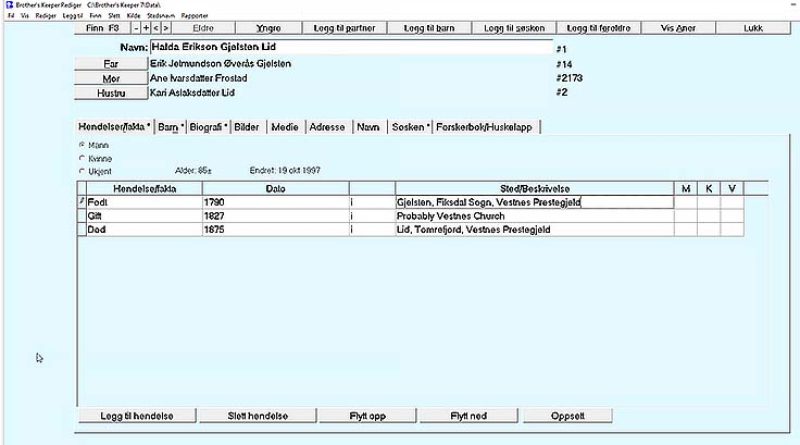Choosing a genealogy software
Here is another part of the “for beginners” articles. It is time to start organizing your information. We’ll look at genealogy software.
Choosing genealogy software to organize our data can be a challenge. On a number of issues, it all comes down to taste. There are, however, a couple of things that, in my opinion, must be included in the software you choose. I will come back to that later.
This article is a re-run to accommodate new readers
In this article, I will only look at/link to software that runs and store data on your computer.
Some of the software I mention and link to have features that can be used to seamlessly export the data to an online database.
This does not mean I am not willing to share my data. I do on a regular basis, but by having the information on my own computer I can communicate with the people I share with. I can also urge them to check the data as I may have made mistakes.
For many years I used the Brother’s Keeper software. It was a coincidence that I started out with this one. A couple of years ago I switched to the Legacy Family Tree software. The reason for this was mainly that this software has more options to output the data (charts, books, webpages, etc.) Legacy does the job for me and I have not yet exhausted all its possibilities.
As these are the software I know the best I am going to refer to and show screengrabs from Legacy and Brother’s Keeper. You should look at a number of different genealogy programs and find the one that suits you the best.
Many of the software producers offer trial versions of their software. You can download these and enter a few names and look at how the software behaves. I recommend spending some time on this as any new routine feels awkward at first.
Checklist for choosing a genealogy software
First, a few things that in my opinion are “musts”
- You need to know that the software you’re looking at actually can run on your computer. The first thing to do is to check up your computer’s specifications.
- The software must be able to display the language(s) of your choice. When it comes down to displaying the Norwegian letters Æ, Ø and Å it has to do with how you enter the information and not the software you use. You might want to have a look at my article “The lost symbols”
- The software must be able to import and export data. It must have GEDCOM capabilities. GEDCOM (an acronym standing for Genealogical Data Communication) is a data format for exchanging genealogical data between different genealogy software. You can read more about GEDCOM here. This is important if you want to transfer your data to new software. Also, you can exchange information with other genealogists by using this format.
- The software must have an easy backup routine. Both Legacy and Brother’s Keeper asks me when I exit if I want to make a backup. I sometimes backup during a session when I am entering a lot of new data. I back up to an external hard-drive. Unless you have a lot of large media files (pictures/videos) I would think that a memory stick would be sufficient.
- The software must have the capability to record sources. This interface must be easy to access and use. Genealogical data without proper sources are worthless!
- The software must have the capability to add notes to the individuals. No matter how advanced the software is, there is information that is best recorded and presented in a narrative style.
- If you (think you may) have ancestry in parts of the world where names are recorded different from how it is done in the English/Norwegian tradition, you must make sure that the software you choose is able to handle this.
What will you be doing with your genealogical data?
Here are a number of questions to ask
- Will you print an ancestor tree to hang on the wall?
- Will you print a family history book?
- Will you present your data on your own website?
- Will you be adding a lot of media files (pictures/videos)?
These are questions to have in mind when you look at how the different programs can present the data.
In the last part of the decision process, we are down to your personal taste. I strongly recommend that you try out the trial versions. You can also ask fellow genealogists to show you the software they use. Does the software have an intuitive user interface? Are the functions you will be using most, easily accessible or do you have to browse through a number of sub-menus to get there? Is the interface pleasing to you? Remember this is a computer screen you are going to spend a lot of time looking at.
Here are some pictures I have grabbed from my software to show some of the reports that can be produced. (Click on a picture and navigate the picture Carousel)
You can take a look at these webpages to see examples of what kind of outputs that can be produced. These are from Legacy 8.0. Many of the other programs produce similar outputs. Reports (look at the bottom of the page) and Web-pages.
As the market is changing all the time I suggest you search the Internet for “Genealogy software” or “Genealogy software reviews”. This way you will get the most updated information on what’s available.












The link to top-ten-reviews is actually to reviews of websites, including Ancestry, MyHeritage, etc., not of genealogy software.
Hello Curt
Thanks for pointing this out. I have somehow mixed up my links. I have now made an edit to the article.
Hello Martin! Good information here. I’d like to add to your first point: “You need to know that the software you’re looking at actually can run on your computer. The first thing to do is to check up your computer’s specifications.”
I think what I’m about to point out is what you meant, but just to clarify, not all programs are available for both Windows and Mac platforms. So in addition to having enough memory, disc space, speed, power, etc., before purchasing a program make sure there is a Windows version for Windows users or a Mac version for Mac users. I was curious about the Legacy program because I’ve noticed that it is a popular program for Windows users, but it appears that there isn’t a Mac version yet (I use a Mac). I found this statement on the Legacy web page: “We currently do not have a “MAC” version of Legacy that will install without the aid of an emulator or Windows installed. We hope to see a fully “MAC” compatible version of Legacy in the future.” In other words for Mac users to use Legacy one needs a Mac with an Intel chip and Parallels, VirtualBox, VM Ware Fusion or Bootcamp installed along with Windows.
To an experienced computer user my comment would be obvious, but for newbies, I’m just sayin’ 🙂
Hello Pete
Great points. Thanks for commenting!
Martin